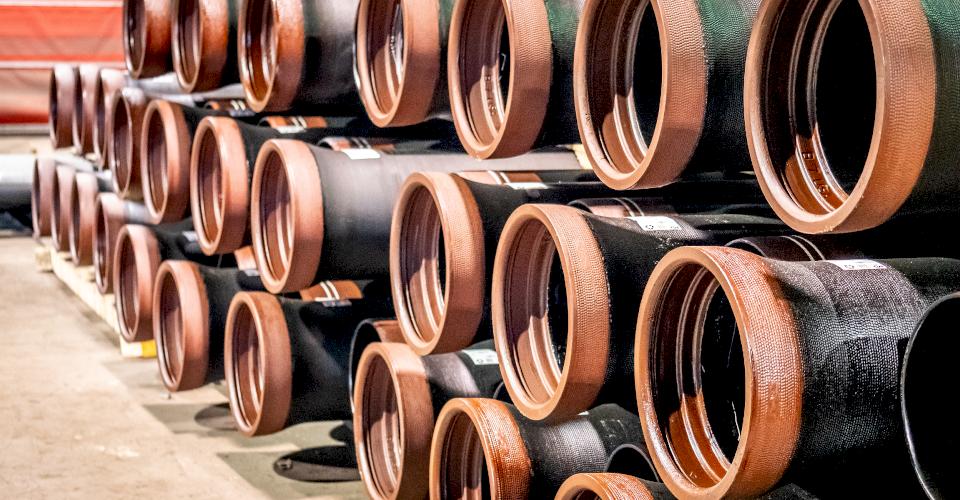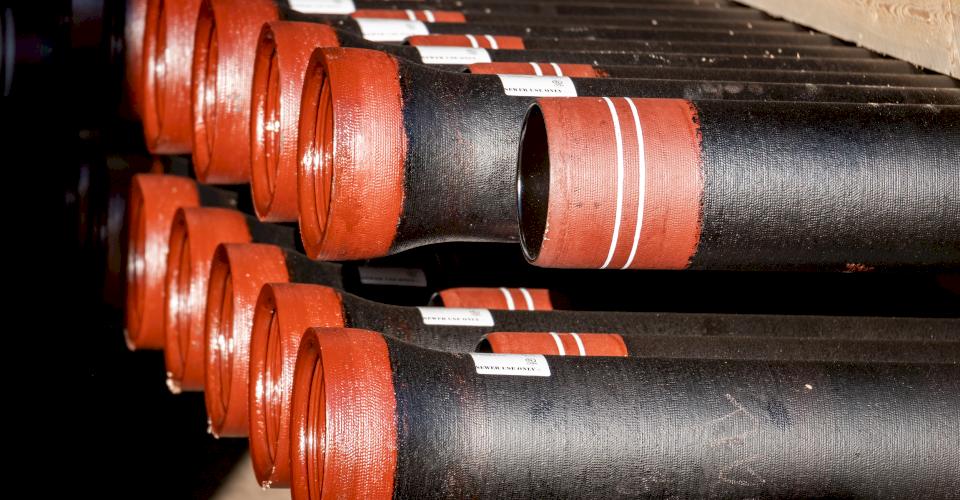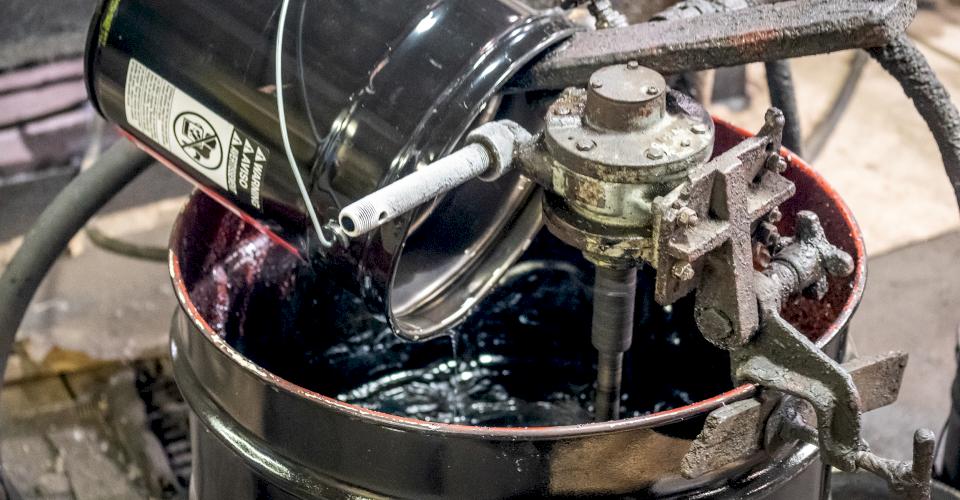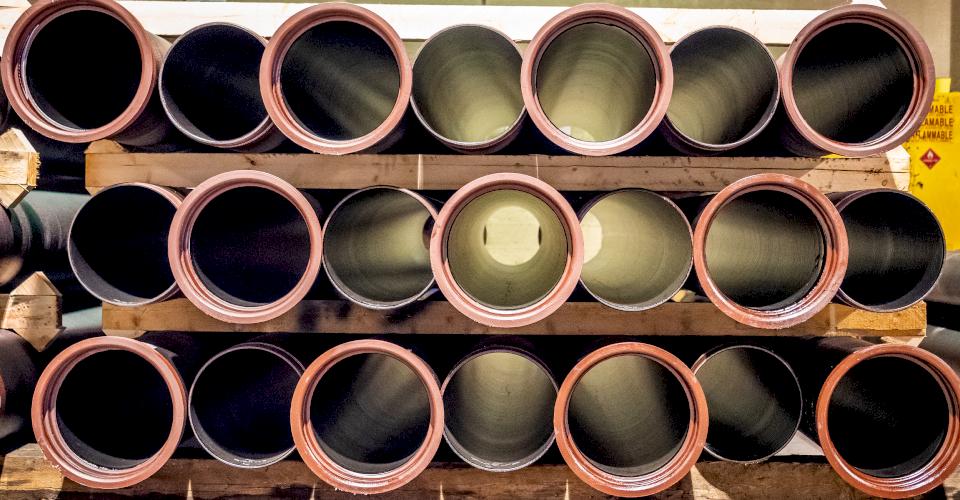What Pipe Linings Are Best for Sewer Applications?
Ductile Iron Pipe is a tested and proven solution to sewer infrastructure needs in America. It’s not a cut and dry solution, though, and you as owners and consulting engineers have several options to choose from.
Below we will provide detailed information to help guide your decision.
Is Cement-Lined Ductile Iron Pipe suitable for Sewer Applications?
A question that we receive in the field all the time is: “Can we use cement-lined ductile iron pipe for our sewer upgrades?”
Yes, but only if you have a pH level from 4.5 to 12.
If your pH level is less than 4.5, then your line is septic and needs to be specially lined. Likewise, if you have a pH level that is greater than 12, then your line is alkaline.
Pro Tip: Alkaline is the opposite of septic but still damaging and requires a special coating inside the pipe line.
Some of the most damaging and fastest cement-lined ductile iron failures we’ve seen have occurred at sewer laterals from restaurants and bars as their fluid streams have a high concentration of citric acids from juices and liquors drained down sinks on a daily basis.
It doesn’t matter if you upgrade the pipe wall thickness from a pressure class 350 to a thickness class 52, that is only going to buy you a few more years in service, but not cease corrosion potentials.
If you can’t guarantee that your pH levels can stay in that 4.5 to 12 range, then you need to protect your iron pipe with a specialty interior lining designed to handle the toughest septic issues. That is where you have choices as owners and engineers as to what lining you want to use.
Most Common Sewer Pipe Linings and Coatings
In the US and Canada, some of the most commonly specified sewer linings include the following:
- Induron Coatings – Birmingham, AL
- Manufacturers of Protecto 401™ Ceramic Epoxy and Ceramapure™ PL 90 and have been widely used in the industry since 1981
- Permite Corp. – Stone Mountain, GA
- Manufacturers of Permox CTF™ and introduced in 2009
- TNEMEC Company, Inc – Kansas City, MO
- Manufacturers of and introduced in 2010 Tnemec Perma-Shield® PL Series 431
The Similarities
It is essential to point out that all the products mentioned above are all ceramic modified amine-cured novolac epoxy coatings and are applied to ductile iron pipe as a nominal 40 MILS Dry Film Thickness (DFT). This typically occurs as two separate 20-mil coatings.
The Differences
The key differences among the four different products come in four different areas that may have a bearing on your decision as to what coating you need.
Those areas of consideration are Application Certifications, Cleaning, Storage and Uses.
1. Application Certifications – refers to how stringent the owners of the coatings are with their product and who they allow to apply it.
- Induron Coatings – manufacturers of Protecto 401™ and Ceramapure™ have strict certification policies, requiring, at a minimum, two audits a year, as well as yearly certification renewals. Protecto 401™ and Ceramapure™ both require minimal surface prep, often called a brush-blast, which leaves the annealing oxide layer in place and utilize single component airless spray systems to apply the coating. Mixing of the catalyst and resin occurring prior to Protecto 401™ or Ceramapure™ encountering the application systems. Both products are designed to work specifically with the innate annealing oxide layer on ductile iron pipe.
- Permite – manufacturers of Permox™ CTF require a formal certification process for approved applicators and have periodic audits to ensure compliance.
- TNEMEC – manufacturers of TNEMEC Perma-Shield® 431 require a formal certification process of approved applicators and have periodic audits to ensure compliance.
- Note: Both Permox CTF™ and TNEMEC Perma-Shield® 431 require a greater extent of surface prep prior to application, addressing the annealing oxide layer specifically. Both utilize plural components with catalyst/resin mixing occurring at the nozzles when applying the coating.
2. Cleaning – by the lining manufacturers recommendation, it refers to the maximum amount of pressure (psi) that is suggested to be used in cleaning the lining as well as well as the nozzle type/size and spray angle.
- Protecto 401™ and – Ceramapure™ 2,500 psi
- TNEMEC Perma-Shield® 431 – 2,500 psi
- Permox™ CFT – 3,000 psi
- Note: Each lining manufacturer has specific instruction for pressure cleaning available on their websites. DIPRA, the Ductile Iron Pipe Research Association, has also conducted research on this topic and suggests using 1,800 psi when cleaning out a ductile iron pipe line, whether that is cement lined or an epoxy coated sewer pipe.
3. Storage – refers to the shelf life of the sewer pipe once it has shipped from the plant to a jobsite and is sitting out in the elements.
- Protect 401™ – published as 18-month shelf-life.
- Permox™ CTF – published as 36-month shelf-life.
- TNEMEC Perma-Shield® 431 – published as 24-month shelf-life.
- Ceramapure™ – currently publications do not indicate a shelf-life, but does suggest inspection prior to installation after long storage periods.
4. Uses – refers to what industries the coatings can be used in.
- Protecto 401™ – Sanitary Sewer and Light Industrial
- Permox™ CTF – Sanitary Sewer and Light Industrial
- TNEMEC Perma-Shield® 431 – Sanitary Sewer and Light Industrial
- Ceramapure™ – Sanitary Sewer, Light Industrial, Potable Water
- The NSF-61 approved binders in the product formula allow for this to be used in water applications as well.
- The only coating with this distinction.
Is there anything else that may differentiate these sewer lining options?
One other facet that you may consider is the color of the lining. Each lining manufacturer uses color to help distinguish itself from other materials and separate these linings materials from regular cement lined-seal coated ductile iron pipe.
- Protecto 401™ – Black, with red distinguishing ring around the bell and spigots of the pipe.
- Permox CTF™ – standard colors are green and red.
- TNEMEC Perma-Shield® 431 – the inside and bell are a light green.
- Ceramapure™ – the interior and bell are dark gray.
The McWane Ductile Approach
McWane Ductile has enjoyed a successful working relationship with Protecto 401™ for more than 30 years with no failures experienced of any note. In fact, we are licensed by Induron and subject to their regular process auditing as well at our Utah and Ohio manufacturing locations. We have no reasoned opposition to anyone using any of the three alternate coatings available in today's market. Just a matter of choice, and trust from experience.
McWane Ductile has many years of experience when it comes to selecting the proper sewer lining for your applications and if you have any questions please contact your local McWane Ductile sales representative.











